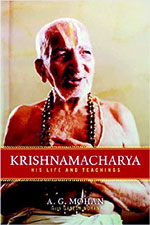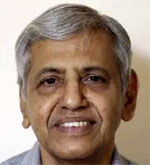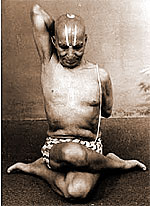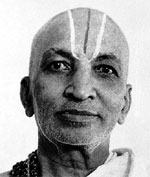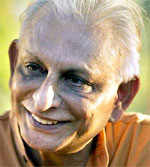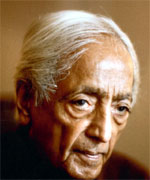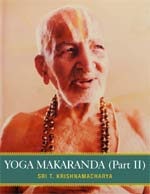

Krishnamacharya Blogs
Tirumalai Krishnamacharya Blogs
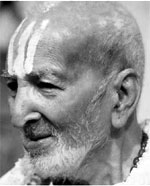 Oct 5, 2016
Oct 5, 2016
Tirumalai Krishnamacharya
Father of Modern Yoga
(November 18, 1888 - February 28, 1989)
As I deepen my yoga practice here in Davao, attending other teachers' classes and teaching in my own class, one name keeps popping up in my mind, almost like a recorder on a playback loop - Tirumalai Krishnamacharya.
Who is he?
Yoga's explosive global growth spawned modern-day yoga rock-stars, iconic gurus, an avalanche of disciples and a multi-billion dollar industry. The one obscure name that made it possible remains enigmatic - Tirumalai Krishnamacharya (1888-1989). Who is he? Not much is known about the life of Krishnamacharya but from the little that is known, it reads like a riveting spy thriller.
Nathamuni Bloodline
Krishnamacharya's blood line can be traced to the revered 9th century yogi, Nathamuni. At age 16, he took a pilgrimage to the shrine of Nathamuni in Alvar Tirunagari where it said he encountered his great forefather in a vision. During the encounter, he saw three yogis, including Nathamuni. Nathamuni sang verses of the Yogarahasya, a text that has been lost through time. Krishnamacharya was able to memorize and transcribe the text, which later on was translated into English by his son, TKV Desikachar.
Authored 8 Books
TK wrote 8 books in his lifetime. Some were written in recollection, some were written years after his death:
- Yoga Makaranda I & II
- Yoga Rahasya - this seems to bridge the old and new era of yoga. It contains 69 poses with emphasis on athleticism and yoga for women
- four compositions on yoga practice (including Yoga Rahasya above)
- two books on spiritual poetry of about 30 slokas (couplets of sixteen syllables)
- commentary on the Yoga Sutras
- untranslated autobiography in Tamil
Early Days of Yoga
While India is the birthplace of yoga, yoga was not always mainstream. As late as the 1920s, yoga was virtually unknown in India and those who practised it were an insignificant minority that were somehow regarded by society as 'problematic people'. Teaching yoga meant a life of poverty to Krishnamacharya. Before anyone could be interested in yoga, Krishnamacharya would try to get people's attention by stopping his heart, lifting heavy objects with his teeth and stopping cars with his hands.
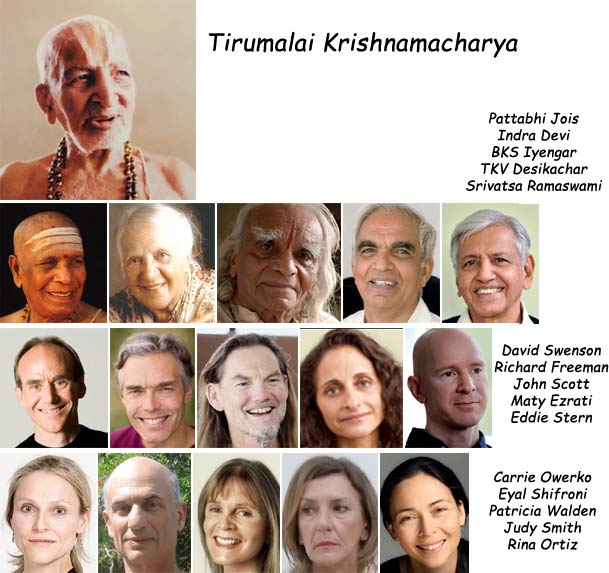
the lineage of Krishnamacharya's yoga legacy
Chronology / Highlights
(some dates are approximations since TK himself could not accurately remember them from decades back)- November 18, 1888 (age 0): Tirumalai Krishnamacharya (TK) was born in the village of Muchukundapuram in the state of Karnataka, India
- 1900 (age 12): TK continued his Vedic study (ancient body of knowledge serving as the backbone of Hinduism) at the Parakala Math and at the University of Mysore. He became adept in the Vedas and Sanscrit. He learned and practised yoga and pranayama from his father.
- 1906 (age 18): TK traveled to Varanasi to learn Sanskrit grammar and logic. He walked 6 miles to Queens College everyday. As a student, he begged for his food, as was customary during those days. He eventually earned a scholarship and became tutor to the principal's son. He continued to practise yoga as taught to him by his father, and even tutored the principal's son. But he wanted to deepen his yoga practice and seeked the counsel of the school principal, Ganganath Jha, who advised him to learn from a yogi up beyond Nepal and into Tibet.
- 1911 (age 23): TK embarks on his 3-week 200-mile trek to a cave in Tibet to be tutored by the yogi, Ramamohana Bramachari. Here, he learned the Pantanjali's yoga sutras, pranayama, asana and the therapeutic application of yoga. Every year, TK would return to Simla for 3 months to teach yoga to the viceroy, who helped him reach Tibet. Of Ramamohana's 7,000 asanas, TK learned 700. He stayed with his guru for 7.5 years.
Gurudakshina
Gurudakshina is what the guru tasks the disciple to do in exchange for all the teachings he has imparted. Since the guru does not charge money, the student has a debt of gratitude so the Gurudakshina is rarely refused. This is usually asked when the student decides to leave. For Krishnamacharya, his guru asked him to do 3 things:- look for the Yoga Korunta - The "Yoga Korunta" is said to be the bible of what is now the Ashtanga Vinyasa yoga written on palm leaves. It includes teachings on asana groupings, vinyasa, bandhas, drishti and mudras. This text was lost over time but eventually, Krishnamacharya found it at the University Library of Calcutta. He transcribed and recorded the text, then passed it on to his students orally. The actual text was said to have been eaten up by ants and no one has actually seen it!
- to marry and have a family - while this may sound normal, this also means Krishnamacharya cannot be a monk in pursuit of his devotion. As a householder, he has to attend to family duties and responsibilities.
- to teach yoga - this might seem a natural progression, but it carried serious repercussions. By teaching yoga, it means Krishnamacharya can only deepen his yoga practice to a certain point because teaching will eat up on his practice time. That is the reason why there are several adept yoga practitioners who don't teach. Additionally, it also meant he had to refuse prestigious postings at various temples and universities.
- 1918 (age 30): TK leaves his guru in Tibet and goes back to Varnasi to get his degree in Vedic philosophy in a remarkably short time. He exceled in debate and his knowledge as a scholar deepened. He also gave lectures and demonstrations in yoga.
- 1926 (age 38): Krishnamacharya's fortunes however improved when he received the patronage of the Maharaja of Mysore, Krishnaraja Wadiyar. Impressed by TK's personality and knowledge, the Maharaja invited TK to come to Mysore to teach yoga. At Mysore, TK set up to teach yoga. He was given the palace gymnastics grounds as his yoga school. There, he trained young athletic boys and refined the yoga sequences to what is now known as the Ashtanga Vinyasa Yoga.

Krishnamacharya's yoga school under the patronage of the Maharaja of Mysore - 1934 (age 46): TK wrote and published his first book, Yoga Makaranda. He also traveled around India to demonstrate yoga. One of his presentations was to stop his heart beat.
- 1946 (age 58): India gained independence and became a republic. Indian royalty including the Maharajah were replaced by the new government. The yoga school began its decline until it closed. TK moved to Chennai to settle permanently with his family - wife, 3 sons and 3 daughters. Here, he continued to teach yoga. It was a tough time for Krishnamacharya to be 60 years old and essentially start from scratch. He persevered to teach yoga but in near obscurity.
- 1973 (age 85): TK takes AG Mohan as his student in the Prasnopanishad (one of the major Upanishads dealing with prana) and yoga asana. In one of their classes, when TK remarked that there are 32 variations of the headstand, AG Mohan's facial gesture was one of an eyeroll. TK noticed it and performed all 32 variations - this is from an 85 year-old!
Renowned Students
The following were students of TK who have since established their own schools with a global following:
- K. Pattabhi Jois (Jul 26, 1915 – May 18, 2009)
Jois, then a strong 12 year old, saw Krishnamacharya's yoga demonstration and asked to be his student. This is the genesis of that relationship that spawned the now famous Ashtanga Vinyasa yoga. Jois remained a devoted and loyal student of Krishnamacharya for decades. Jois later on became the guru of Westerners who have now become the icons of Ashtanga Yoga - David Swenson, Richard Freeman, John Scott, Tim Miller, Chuck Miller, etc. - Indra Devi (May 12, 1899 – Apr 25, 2002)
Krishnamacharya, reluctantly but later on assuaged by the Maharaja to accommodate a female Westerner to be one of his students, Zhenia Labunskaia (who became Indra Devi) eventually acquiesced. It is interesting to note that although Jois and Indra were both students of Krishnamacharya at the same time, Indra received a different kind of yoga mentoring, one of a gentler tone, which underscores a cornerstone tenet of Krishnamacharya that yoga follows the student and not the student adjusting to the yoga discipline. Indra became an exemplary student and later on established her school and introduced yoga in Shanghai, the Soviet Union, the USA and in Latin America. Indra continued to teach yoga way into her 90s. - BKS Iyengar (Dec 14, 1918 – Aug 20, 2014)
Perhaps the student who was the most influential in introducing yoga to the west is BKS Iyengar. He was the brother of Krishnamacharya's wife, a sickly 15-year old who lived with the family. He became a student at the same time as Jois and Indira, but perhaps the least favored of the three. He would often be excluded in some sessions and would peak through the window to see the lessons given to other students. His time with Krishnamacharya only lasted a year but he deepened his practice by innovating and articulating the asanas. He introduced and became famous for using props to aid students into proper alignment and adjustment. He is the only yoga teacher to have received the Padma Vibhushan award, the second-highest civilian award in India for "exceptional and distinguished service". - TKV Desikachar (Jun 21, 1938 - Aug 8, 2016)
Later on in life, in a surprising twist of fate, Krishnamacharya's son became his student which endured for 28 years. TK was no longer a stern taskmaster during this time. He was more accessible and perhaps more gentle, with his teachings accomodating the students' limitations and particular needs. Desikachar went on to develop Viniyoga - a kind of yoga with therapeutic application. - AG Mohan (1945-)
(student from 1971 to 1989) A student of TK for 18 years, AG Mohan went on to become a yoga teacher, yoga author and founder of the. He authored Yoga for Body, Breath, and Mind (1993), Yoga Therapy (2004), Krishnamacharya: His Life and Teachings (2010), Yoga Reminder (2015). He was also the translator of important classical yoga texts, the Yoga Yajnavalkya (2013), and the Hatha Yoga Pradipika (2017). - Srivatsa Ramaswami (1939-)
(student from 1954 to 1987) Perhaps the least known of TK's students, Ramaswami was the longest-running student of TK spanning 33 years on a private one-on-one basis - more than any other student. What he learned from the master spans a very broad spectrum that included Vedic chanting, asana and its relevant vinyasas, counter poses, pranayama, meditation, Yogic philosophy and text, and yogic therapy. He encapsulated what he learned from TK through his comprehensive and detailed book, The Complete Book of Vinyasa Yoga.
Ending Thoughts
While Krishnamacharya's students gained fame and recognition in spreading his yoga, Krishnamacharya himself remained obscure, anomymous and perhaps poor. But that did not matter. It was never about him. In fact, he never claimed originality in his teachings, either giving credit to the Yoga Korunta, the Yoga Sutras and other ancient texts. And like his yoga, he himself was evolving - from an aloof and strict taskmaster in the days of Iyengar to that of a compassionate healer in the time of TKV Desikachar.
Krishnamacharya was a man of layered dimensions - to his students, he was the yoga master. To a wider circle in India, he was also a university teacher - holding the equivalent of doctorates in 7 different fields including ayurveda, law and philosophy. He was also a Sanskrit scholar. Unbeknownst to the general public, he was also a gourmet cook, a horticulturist, and a shrewd card player.
His yoga message remains clear - the practice must be tailor-fitted to the student and not the other way around. The student's needs and limitations should define the kind of yoga taught to him. In gaining proficiency, yoga then extends the student's abilities. In Jois, a strong 12 year old, he taught what is now the athletic Ashtanga Vinyasa yoga. In Indira Devi, a female and without the strength of Jois, she was taught a gentler form of yoga. And to his son TKV Desikachar, an engineer and a man of critical thinking, he taught his son the therapeutic science of Viniyoga.
On a personal basis, Krishnamacharya inspires me. His yoga philosophy has given me liberty to evolve my yoga according to my life experience, my deepening practice, my own experimentations and according to how I synthesize information from external sources - yoga sites, ancient texts, anecdotal narratives, Youtube videos, etc. I integrate into my yoga, the lessons learned from S.N. Goenka's Vipassana meditation, from Zen monk, Thich Nhat Than's mindfulness meditation, a prison inmate's burpee workout, a cardio vascular rope skipping routine and little life morsels I glean from journeying out on the open road.
I wrote this blog to honor this unique man who has helped shape not just my yoga, but how I see life and my role in it. My utmost humility, I bow down to him, who I consider my guruji, Tirumalai Krishnamacharya.
--- TheLoneRider
Yoga & Fitness Website: YOGA by Gigit ![]()
Thank you Vaibhav Rana, Claire Rana and Jessie Villabona Severino for all the references and input
T. Krishnamacharya Blogs
- Tirumalai Krishnamacharya Oct 5, 2016
- Demystefying Ashtanga Yoga Feb 13, 2014
ps - If you want me to participate and write about your yoga studio or your yoga practice, email me. For my complete yoga profile, you can visit this page: YOGA by Gigit
Leave a comment?
Reader Comments:
 JK Swapna
JK Swapna(Feb 9, 2024) Thanks for penning down about Krishnamacharya ji
 Veer
Veer YogaRAMBHA
(Oct 6, 2016) Great article! May be one day when you are here I'd tell you the whole real story in detail! Sri Ramaswami is one of the last students of Krishnamacharya. During my training with Mr. Ramaswami, he told us loads of stories about this teacher and busted a lot of myths and half stories we usually find online!!
 Well Wanders
Well Wanders (Oct 6, 2016) wow, what a history. makes me inspired to do asanas again. although my spiritual practice is intact, physical is mandatory for me since it is a prerequisite to the mental and spiritual aspect of it. thanks for the good read!
 Jessie
Jessie Iyengar Yoga Teacher
(Oct 6, 2016) Following a lineage retains the purity of the tradition. In yoga, Krishnamacharya is a major lineage.
 Eric Ajata Alessi
Eric Ajata Alessi(Oct 6, 2016) You lost my respect adding a John scotts and all other "yoga rockstars". People talking about purity of tradition, and you are adding people who study with patabijois, already the first one breaking the lineage since he was 20yo.
Next Yoga story:

![]()
»» next Peoplescape: Duterte Mania in Davao
»» next Yoga: Sirsasana, Sarvangasana - Yoga Makaranda II
»» back to Fab People
»» back to Homepage
ARCHIVE 2025:
JAN |
FEB |
MAR
1970 |
1973 |
1975 |
1976 |
1979 |
1981 |
1996 |
2000 |
2001 |
2002 |
2003 |
2004 |
2005 |
2006 |
2007 |
2008 |
2009 |
2010 |
2011 |
2012 |
2013 |
2014 |
2015 |
2016 |
2017 |
2018 |
2019 |
2020 |
2021 |
2022 |
2023 |
2024 |
2025 |
ALL BLOGS

